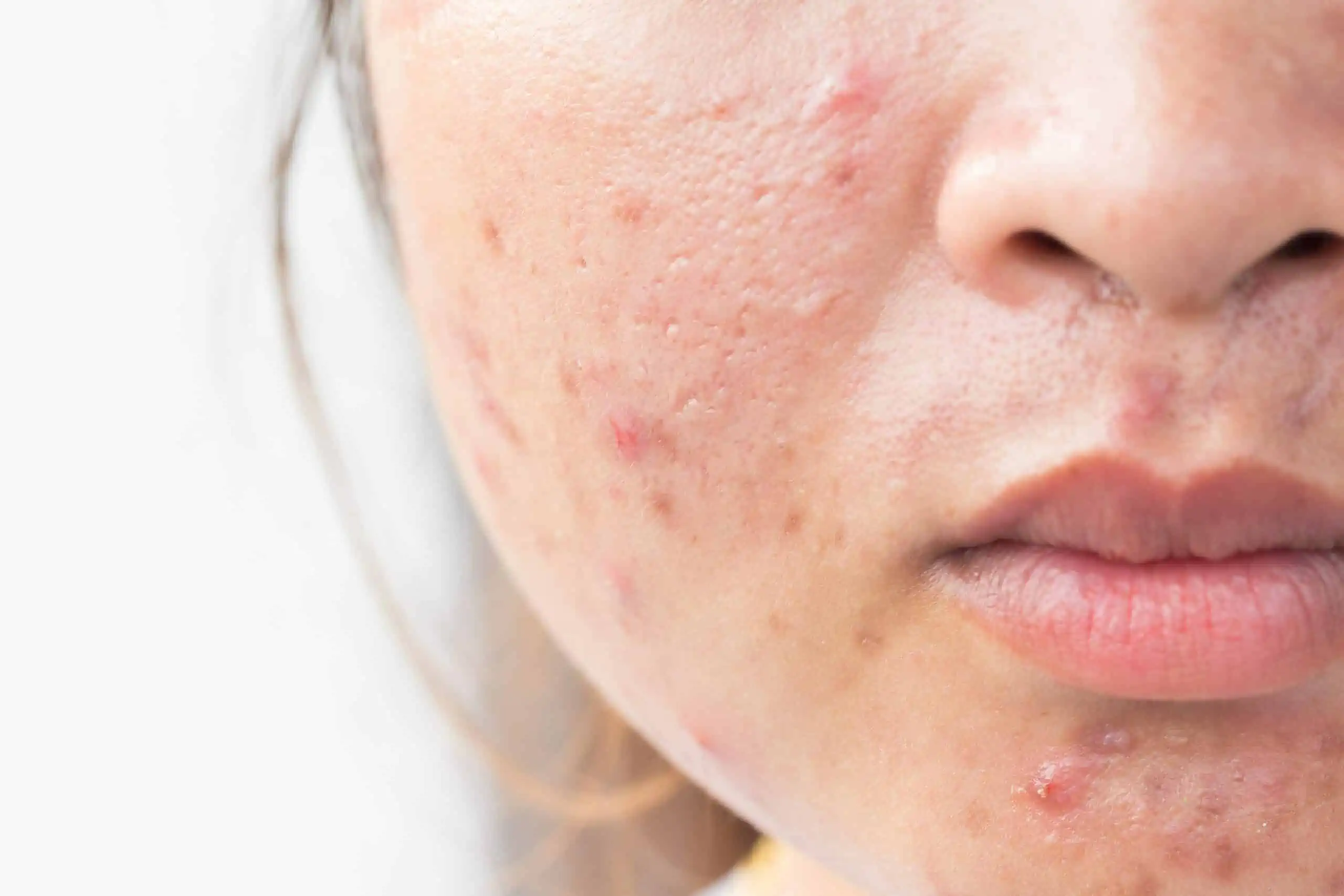How to Get Rid of Acne Scars: Home Remedies & Clinical Treatments

Strong 8k brings an ultra-HD IPTV experience to your living room and your pocket.
Acne scars might be stubborn but can be improved with clinical procedures and simple home cures. You can get smoother skin, even tone and the confidence you deserve.
Breakouts fade, but acne scars stick around like unwanted guests, messing with your skin and your confidence. But the good news is you have got the options. From kitchen-shelf heroes to dermatological approved power acne scars treatments, there is a whole arsenal of solutions that actually work.
Whether you are chasing a glass-skin glow or just want those stubborn marks gone for good, this guide breaks down the best ways to reclaim clear and smooth skin both naturally and clinically.
What Are Acne Scars?
Markings or depressions left on the skin following severe acne are known as acne scars. They form when deep inflammation damages skin tissue, and the body heals by producing too much or too little collagen. This healing or recovery imbalance leads to uneven texture, dark spots or indentation. The severity of acne scars depends on how deep were the original breakouts.
Types of Acne Scars
Acne scars are not all the same, they come in different shapes, depths and textures. Knowing the type of scar is the first step to finding the right treatment.
Atrophic Scars (Depressed Scars)
These scars are the most common and result from the loss of tissue. When your skin doesn’t produce rough collagen during the healing phase. It leaves behind indented or sunken marks. There are three subtypes:
- Ice pick scars
- Boxcar scars
- Rolly scars
Hypertrophic Scars (Raised Scars)
These scars happen because of excessive collagen which is produced during healing. Instead of leaving an indentation, they form raised, firm tissue over the original wound site.
Often red or flesh-colored and typically appear on the chest, back, soldiers, or jawline.
They can improve slightly over time or remain elevated.
Keloid Scars
Keloids grow beyond the limits of the original acne lesion and can continue to grow over time, thus representing a more aggressive type of hypertrophic scars.
It is typically darker than the neighboring skin, itchy and occasionally painful.
More prevalent among those with darker skin tones or a genetic propensity to produce keloids.
Treatment is difficult and might call for steroid injections or laser treatment.
Cystic Acne Scars
Deep inflamed cystic acne causes scars that can badly harm the skin. These sometimes result in:
Atrophic scars such as boxcar, ice pick, rolling.
In more severe cases, hypertrophic or keloid scars
Changes in pigment (PIH or PIE)
The scars left behind are sometimes more prominent and difficult to treat because of the great impact cystic acne has on the skin.
Home Remedies for Acne Scars
Some home made remedies can help for moderate acne scars in better skin appearance:
Remedy
Key benefits
How to use
Aloe Vera
Soothes skin and promotes healing
Apply fresh gel daily to scarred areas
Honey
Antibacterial and supports tissue regeneration
Apply raw honey overnight
Lemon Juice
Lightens dark spots with citric acid
Apply diluted juice for 10 minutes, rinse and use sunscreen after
Coconut Oil
Moisturizes, rich in vitamin E and fatty acids
Massage a small amount into scars daily
Baking Soda
Gently exfoliates, reduces scar appearance
Make paste with water, apply for a few minutes, then rinse off
Clinical Treatments for Acne Scars
For more severe or persistent acne scars, clinical treatments offer more effective solutions:
Microneedling
Controlled micro-injuries on the surface of the skin are produced via microneedling using a gadget fitted with small, sterile needles.
How it works
These little perforations cause collagen and elastin synthesis by stimulating your skin's natural wound-healing mechanism. This progressively evens out tone, improves skin texture, and lowers the depth of atrophic (depressed) scars.
Ideal for
- Boxcar and rolling scars
- Enlarged pores
- Overall skin rejuvenation
- Treatment time - 30 - 45 minutes
- Recovery - Mild redness for 1-3 days, little downtime
Microneedling with Subcision
This combines the collagen-boosting perks of microneedling with subcision, a technique intended to target deeper and anchored scars.
How it works
Subcision breaks up fibrous bands pulling the skin down by piercing a tiny needle under the skin, typical of rolling scars. This elevates the skin and lets fresh collagen develop in those regions. Microneedling is then used to further boost collagen on the surface.
Ideal for
- Deep rolling scars
- Skin that feels uneven or “tethered”
- Treatment time - 45-60 minutes
- Recovery - Mild edema or bruising for 3-7 days
Face PRP (Platelet-Rich Plasma) Therapy
Face PRP treatment is a process which uses your body’s own healing properties.
How it works
From your body, a small amount of blood is centrifuged to isolate the plasma, which is high in growth factors. Mostly, PRP is used in conjunction with microneedling for better results. Then, this platelet-rich plasma is injected or micro needled into the skin to hasten healing, boost collagen, and improve skin texture.
Ideal for
- Mild to moderate acne scarring
- Boosting overall skin health
- Those looking for a more natural, autologous approach
- Treatment time - 45-60 minutes
- Recovery - Redness and tenderness for 1-3 days
- The face PRP Treatment Cost is very reasonable for everyone.
Chemical Peels
Chemical peels promote the growth of new, smoother skin below by exfoliating the top layers of the skin using a chemical solution.
Types and How it Works
Superficial Peels: Use gentle acids like alpha-hydroxy acid (AHA) to mildly exfoliate. Great for uneven texture and pigmentation.
Medium Peels: Use stronger acids such as trichloroacetic acid (TCA) to penetrate the mid-layers of skin and treat moderate scarring and discoloration.
Deep Peels: Deep peels employ strong chemicals such phenol, which penetrate deeper skin layers and are useful for severe scarring but come with longer downtime and greater hazards.
Ideal for
Hyperpigmentation and post-inflammatory marks
Surface-level acne scars
Uneven skin tone
Treatment time - 60-90 minutes
Recovery
Superficial: Minimal peeling, 2–5 days
Medium: Peeling for 5–7 days
Deep: Peeling and recovery can take several weeks
Carbon Laser Therapy (Carbon Peel)
Carbon peel is a non-invasive laser treatment that uses a layer of liquid carbon and a laser to deep cleanse, exfoliate, and revitalize the skin.
How it Works
Carbon lotion is applied to the skin where it sinks into the pores. Targeting and eliminating the carbon particles together with dead skin cells, extra oil, and pollutants, a Q-switched laser is then swept over the skin. The laser energy also warms the skin, which prompts collagen synthesis and pore reduction.
Ideal for
Oily and acne-prone skin
Shallow acne scars
Enlarged pores and dull skin
Treatment time- 20-30 minutes
Recovery - None - It’s often called a “lunchtime facial”
Laser Resurfacing
More severe laser resurfacing eliminates injured skin layers and stimulates fresh and smoother skin to sprout. There are two primary methods:
Ablative Lasers: Ablative lasers are very good for deep acne scars but require a lot of downtime; they eliminate the outermost levels of skin (e.g., Erbium or CO₂ lasers).
Non-Ablative Lasers: Penetrate without removing skin. They stimulate collagen production beneath the surface, with less downtime but usually milder results.
How it Works
Focused light emitted by the laser either vaporizes scarred tissue (ablative) or heats the dermis (non-ablative) to encourage repair. New skin grows during healing, therefore smoothing texture and minimizing scars.
Ideal for
Boxcar and ice pick scars
Severe acne scarring
Individuals looking for dramatic improvement
Treatment time - 30-90 minutes
Recovery
Ablative: 7–14 days of downtime with redness and peeling
Non-ablative: Minimal downtime
Combining Treatments for Better Results
Combination therapies, such as microneedling following subcision or microneedling with face PRP are used for better results. You must adjust your treatment strategy to meet the needs of your skin because there is not a single treatment that works for all scar types. To develop a safe and efficient approach, always see a licensed skin specialist or cosmetic surgeon.
Prevention Tips
Preventing acne scars is more effective than treating them. Here are some suggestions:
Don’t pick or squeeze pimples sparingly as doing so might increase inflammation and results in scarring.
Handle or treat acne early to avoid major breakouts and ensuing scarring.
Shield your skin with sunscreen to help healing and prevent hyperpigmentation.
Keep a proper skincare schedule. Regular washing, scrubbing and moisturizing help to maintain clear skin and remove dirt.
Conclusion
Many solutions exist to match various skin types and scar severity, from simple home cures to latest clinical treatments. By meeting a skilled skin specialist, you can find out the most suitable treatment schedule for your specific needs which can help you out in getting clearer and smoother skin.
FAQs
Why do acne scars happen?
They occur when deep acne damages the skin and your body either makes too much or too little collagen while healing. That creates indentations or raised spots.
Do all pimples leave scars?
Not all. Often, minor acne disappears without scarring. But if you pop, squeeze, or have very bad cystic acne, then you have more chances of scarring.
What is subcision, and when is it used?
Subcision breaks up fibrous bands pulling the skin down by piercing a tiny needle under the skin. It works really well for rolling scars.
Can acne scars be treated permanently?
Though acne scars cannot be completely erased, many treatments can significantly lower their visibility. Combining treatments and being determined usually yields better results.
Are acne scar treatments painful?
Slight pain may be felt during treatment due to the needle but it is quite tolerable.
Can I prevent acne scars from forming?
Yes. Don’t pop or pick pimples. Early treatment of severe acne requires a dermatologist appointment and an effective skincare regimen.
Note: IndiBlogHub features both user-submitted and editorial content. We do not verify third-party contributions. Read our Disclaimer and Privacy Policyfor details.


